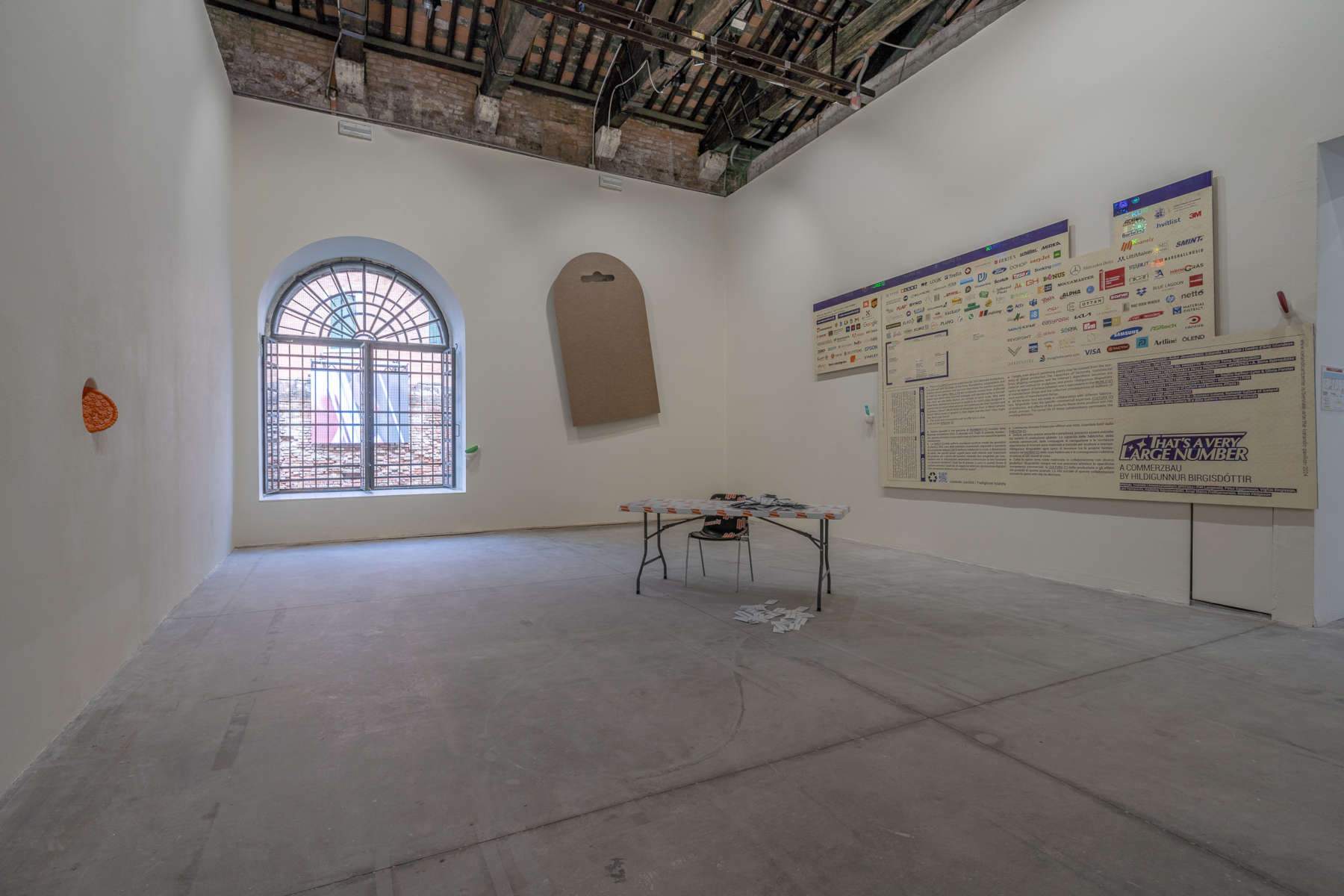Iceland Pavilion at the Biennale presents an ironic exhibition on our material culture
The Icelandic Pavilion at the 60th International Art Exhibition - La Biennale di Venezia opens to the public this week, presenting That’s a Very Large Number - A Commerzbau by Hildigunnur Birgisdóttir. The exhibition, curated by American curator Dan Byers, presents a selection of sculptures and installations that animate the strange relationships that form between us and our world of mass-produced objects. The visual artist, Hildigunnur Birgisdóttir, of Reykjavik, is known for her nuanced practice that critically examines global systems of production and distribution and the bizarre lives of the products they create. Her work draws attention to objects that exist on the periphery of our vision, often disposable accessories of material culture.
The artist seeks the beauty inherent in these objects, which have been shaped through countless aesthetic decisions, material limitations, conditions of production, moral codes, agreements, desires, and mistakes. Birgisdóttir uses these systems and human interactions to create her artworks, harnessing the cultures and capabilities of producers, manufacturers, and commercial companies as part of her artistic process. The artist creates an immersive environment, inspired by the tradition of "Merzbau," proposed by German Dada artist Kurt Schwitters, which involved a walk-in, abstract collage made from discarded materials and objects. Upon entering the pavilion, visitors come across what appears to be a “white cube” exhibition space painted in the same faded shade of “white” as old light switches and plastic electrical cables. A large wall installation, made from a recycled floor panel from the Architecture Biennale 2023, has also been adorned with the logos of companies, foundations, corporations and suppliers whose products and services made the pavilion possible. A multisensory experience that explores how objects connect and communicate with us is offered by two small plastic sculptures, carved from the control panels of a home printer and a refrigerator, that flash incessantly, moving in and out of synchronization with each other. Through the pavilion window, visitors can be distracted by the new channel view from an outdoor LED screen, which broadcasts live, ever-changing advertising content from the corner of a highway on the outskirts of Reykjavik.
Small plastic toys made for dollhouses have been scanned, enlarged and reproduced by a German company. The sculptures capture the oddly smooth surfaces and simplified shapes of the toys, designed to communicate only the information necessary to make their function clear. Large relief sculptures, produced by a Dutch company with the latest developments in sustainable manufacturing, grace the pavilion walls. One sculpture made from recycled jute coffee sacks, the other from recycled denim were molded into the shapes of the small, inexpensive packages that protect the products we intend to buy. The artist’s work reflects the tension between the personal pleasure that can be found in our world of material objects, but also the consequences of a world overrun by these objects. Iceland has exhibited at the Venice Biennale’s International Art Exhibition since the 1960s and has presented its national pavilion since 1984. Previous presentations include Sigurður Guðjónsson’s atmospheric audiovisual sculpture Perceptual Motion in 2022, Shoplifter’s neon hypernatural hair installation Chromo Sapiens in 2019, and Egill Sæbjörnsson’s trolls in Out of Control in Venice in 2017. The Icelandic Pavilion is commissioned by the IcelandicArt Center, which promotes and supports contemporary Icelandic art internationally through grants, collaborations, and projects.
“I am really excited to present my ideas to the visitors of the Venice Biennale. Dealing with an international art exhibition has been a joy, and I hope people will take a moment to enjoy the pleasures and pains of this exhibition, of what this place in time has to offer. Dan Byers says: It is a pleasure to finally be able to share Hildigunnur Birgisdóttir’s beautiful, intriguing exhibition. That’s a Very Large Number - A Commerzbau is full of modest gestures that initially fascinate and delight. Then they make you reconsider everything. This project and its works live between these two poles, asking questions about aesthetics and social conditioning, abstraction and capitalism, wonder and the dark abyss of overlapping planetary catastrophes. All these complicated ideas and feelings are evoked with a precise and destabilizing sense of humor. I know visitors will find the exhibition a pleasantly quiet but surprising experience,” says Hildigunnur Birgisdóttir.
“During a recent visit to Hildigunnur’s studio,” says curator Dan Bryers, “I took a picture of a text that read, ’the periphery of capitalism is where the system begins to fail and its components are revealed.’ Located in a nondescript building in an unremarkable neighborhood of a city on the edge of a small island straddling the European and North American continents, his studio is filled with seemingly modest gestures that at first fascinate but later stimulate cascading philosophical and political questions. Hildigunnur repurposes for us the mass-produced surfaces of our cognitive and physical experiences, creating blunt appropriations of industrialized language and materials. A dark, squinting humor (with hints of wonder) pervades Hildigunnur’s careful presentation of the things, materials, lights and language we would prefer to remain on the periphery of our vision and thought.”
Pictured: the Pavilion of Iceland. Photo: Andrea Avezzù
 |
| Iceland Pavilion at the Biennale presents an ironic exhibition on our material culture |
Warning: the translation into English of the original Italian article was created using automatic tools. We undertake to review all articles, but we do not guarantee the total absence of inaccuracies in the translation due to the program. You can find the original by clicking on the ITA button. If you find any mistake,please contact us.




























